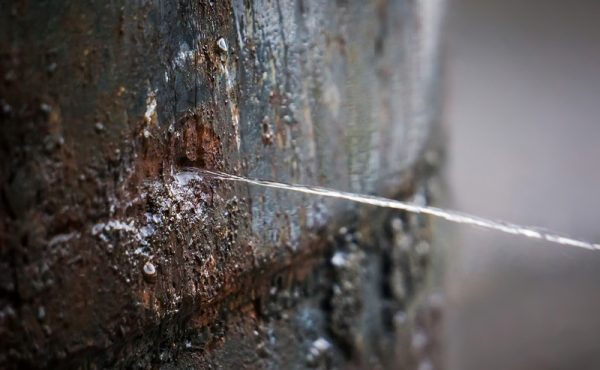Welcome to Part 1 of our blog on identifying and correcting potential causes flood damage and water damage.
According to the Insurance Information Institute, the number two cause of property damage claims, second only to wind and hail claims, is water damage related claims. Water damage claims total in the billions of dollars every year. Such claims are particularly costly in multi-unit buildings including low-rise, mid-rise, and high-rise condominiums, apartments, office and industrial buildings, and hotels.
Typically, when a water release occurs in one unit of a multi-unit building additional units are directly affected, significantly increasing the amount of the claim. The glaring fact, however, is that most water damage claims are largely preventable.
The typical amount of a water damage claim for a single-family home ranges roughly from about $2,000 to $10,000 per occurrence. However, for a multi-unit building the low-end claims that we are seeing are in the tens of thousands of dollars range and many of the cases we consult on are in the hundreds of thousands of dollars range, with some exceeding one million dollars.
Water damage can occur from any number of sources, any time of the year, and a small leak can become catastrophic instantaneously. What’s more, water tends to travel very quickly throughout a building and over great distances from its source. Water leaks can be difficult to detect and even harder to locate precisely. And, all too often, water releases occur over a weekend when reaction times are slower, and can even go undetected all weekend, increasing the scope of the damage. So it’s important to know what to look for and solve it before a water release occurs.
Below are ten sources of water damage taken from actual claims that we have provided expert witness services on involving significant dollar-value property damage insurance claims and, in some cases, extensive and costly litigation. Building owners and operators should be aware of these and take steps to identify and mitigate them in their buildings. This is by no means an exhaustive list and the items on the list are not presented in any particular order of importance, as they will vary from building to building based upon things like age and construction type.
Here they are:
- Roofing Issues– The condition of a building’s roof is of vital importance, especially flat roofs. Conditions like low spots, improperly constructed drainage slopes, lack of proper drainage, situations that allow ice dams to build up, improperly installed roofing materials, and physical damage left un-repaired can all contribute to water infiltration. Skylights and roof penetrations are often problematic. Roofs, skylights and all roof penetrations should be inspected annually and poor conditions remedied by qualified, licensed contractors. During the winter, properly remove built-up snow periodically in a safe and correct manner and ensure that proper drainage is working.
- Connector Hoses – Flexible hoses including those used to connect the building’s water supply to toilets, sinks, ice-makers, dishwashers, and heat pump units, can fail. Some brands have even been the subject of class action lawsuits. About half of the claims having to do with clothes washers are related to the connector hoses. Check hoses regularly for signs of wear and tear, and replace as needed. Also, be aware of brand recalls and class action lawsuits.
- Bad Plumbing Work – A surprising number of claims come from bad or improper plumbing work in the form of repairs, water system upgrades, or re-piping projects. Plumbing connections need to be made properly and, if not, catastrophic results can occur. During a typical re-piping project hundreds of pipe and fitting connections are made, increasing the chances of a mistake. Always hire well-qualified licensed plumbers to do the work. Make sure that all work is adequately checked under full water pressure before the plumber leaves the building. Hire a qualified third-party inspector to check the work on large repair and plumbing projects.
- Discharge from Backflow Prevention Assemblies – Backflow prevention assemblies are designed and required to prevent bad water from entering the public drinking water supply. They are connected to both domestic water supplies and fire suppression systems. As a normal part of their operation, these devises will discharge water. Also, if a check valve inside of the backflow prevention devise becomes clogged or fouled, a lot of water can be discharged all at once. A properly sized drain should be located at the backflow prevention device. Every backflow prevention device is required to be inspected and tested annually.
- Automatic Control Valve issues – Automatic Control Valves, commonly referred to as ACVs, or as Pressure Regulating Valves (PRVs), are installed in buildings to regulate the water pressure and to maintain that pressure within a certain set range as water demand fluctuates throughout the day. If AVCs are not inspected and maintained as necessary, properly sized, installed incorrectly, or are not properly operated, an increase in water pressure can result affecting plumbing downstream and could burst supply lines, cause water heater safety relief valves to open, and/or damage fittings and appliances. A well-qualified licensed plumber should inspect and maintain AVCs annually in full accordance with the manufacturer’s instructions and recommendations. Only allow an experienced licensed plumber to install, maintain or adjust your ACVs.
Please refer to Part 2 of our blog for the next five potential causes of water damage.
Written by Joel E. Breuer, PE managing partner at HG Cornerstone. Mr. Breuer can be contacted at jb@hgcornerstone.com.

